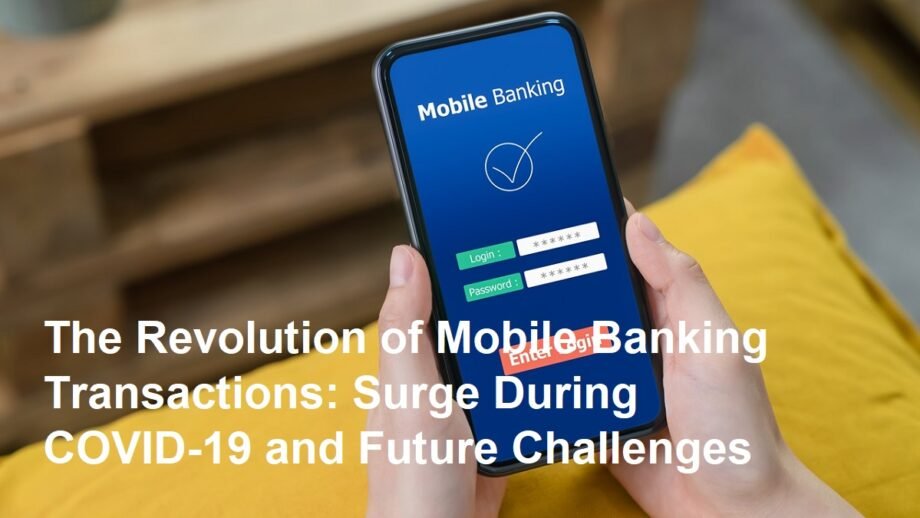Introduction
The rapid evolution of technology has transformed the way people manage their finances, with mobile banking becoming a cornerstone of modern financial transactions. The COVID-19 pandemic significantly accelerated this trend, driving a remarkable surge in mobile banking usage worldwide. This article explores the revolution of mobile banking transactions, the reasons behind the dramatic increase during the pandemic, and the challenges that lie ahead for this dynamic industry.
Understanding the Mobile Banking Revolution
Mobile banking refers to the use of smartphones and other mobile devices to conduct financial transactions, access bank accounts, pay bills, transfer funds, and manage money anywhere and anytime. This convenience has redefined banking by offering unparalleled ease of access and real-time financial management, reducing the need to visit physical bank branches.
The mobile banking revolution is underpinned by advancements in technology such as faster internet, sophisticated mobile apps, biometric security, and integration with digital wallets. These innovations have made banking services more user-friendly, secure, and accessible to millions globally.
Why Mobile Banking Transactions Surged During the COVID-19 Pandemic
The COVID-19 pandemic was a pivotal moment for mobile banking adoption. Lockdowns, social distancing, and fear of virus transmission led to limited access to physical bank branches, pushing consumers to adopt digital alternatives rapidly.
- Increased Demand for Contactless Solutions Health concerns made contactless and remote transactions a necessity. Mobile banking provided a safe alternative, allowing users to pay bills, transfer money, and shop online without physical contact.
- Shift in Consumer Behavior Lockdowns changed daily routines, accelerating digital transformation in various sectors, including finance. People became more comfortable using mobile apps for banking, which many had previously avoided due to habit or security concerns.
- Expansion of Digital Financial Services Banks and fintech companies responded to the pandemic by enhancing mobile banking features, improving usability, and offering innovative services such as instant loan approvals and digital investment platforms. These efforts attracted new users and deepened engagement.
- Government and Regulatory Support Many governments encouraged digital payments and supported infrastructure improvements to promote financial inclusion. Initiatives to reduce cash dependency helped increase mobile banking adoption.
Challenges Facing Mobile Banking in the Future
Despite the remarkable growth and benefits, mobile banking still faces several key challenges that could impact its future trajectory:
- Security and Privacy Concerns As mobile banking usage grows, so does the risk of cyberattacks, fraud, and data breaches. Banks must continuously update security protocols and educate users to build trust and protect sensitive information.
- Digital Divide and Inclusion Not everyone has access to smartphones or reliable internet, particularly in rural or low-income areas. Bridging this digital divide is crucial to ensuring equitable access to mobile banking services globally.
- Regulatory Compliance and Changing Policies The financial landscape is heavily regulated. Banks must navigate complex and evolving regulations regarding data protection, anti-money laundering, and consumer rights, which vary by country and can slow innovation.
- User Experience and Retention With growing competition from fintech startups and digital wallets, banks must maintain seamless, intuitive mobile experiences to retain customers. Continuous app enhancements and responsive customer support are essential.
- Technology Integration and Legacy Systems Many traditional banks rely on outdated legacy systems that complicate integration with new mobile platforms. Modernizing IT infrastructure is costly but necessary to support scalable, robust mobile banking services.
The Future Outlook for Mobile Banking
Mobile banking is poised to continue its growth trajectory as technology advances and user demands evolve. Emerging trends such as AI-powered financial advice, voice banking, blockchain-based security, and open banking APIs will redefine the mobile banking landscape. Collaboration between banks, fintechs, and regulators will also shape a more secure, inclusive, and innovative banking future.
Conclusion
The revolution in mobile banking transactions, fueled by the COVID-19 pandemic, has transformed financial services by making banking more accessible, convenient, and safe. While the surge in usage is a testament to the sector’s adaptability, ongoing challenges related to security, inclusion, regulation, and technology integration must be addressed to sustain growth. Forward-looking strategies focused on innovation, user experience, and trust will be key to unlocking the full potential of mobile banking in the years to come.









